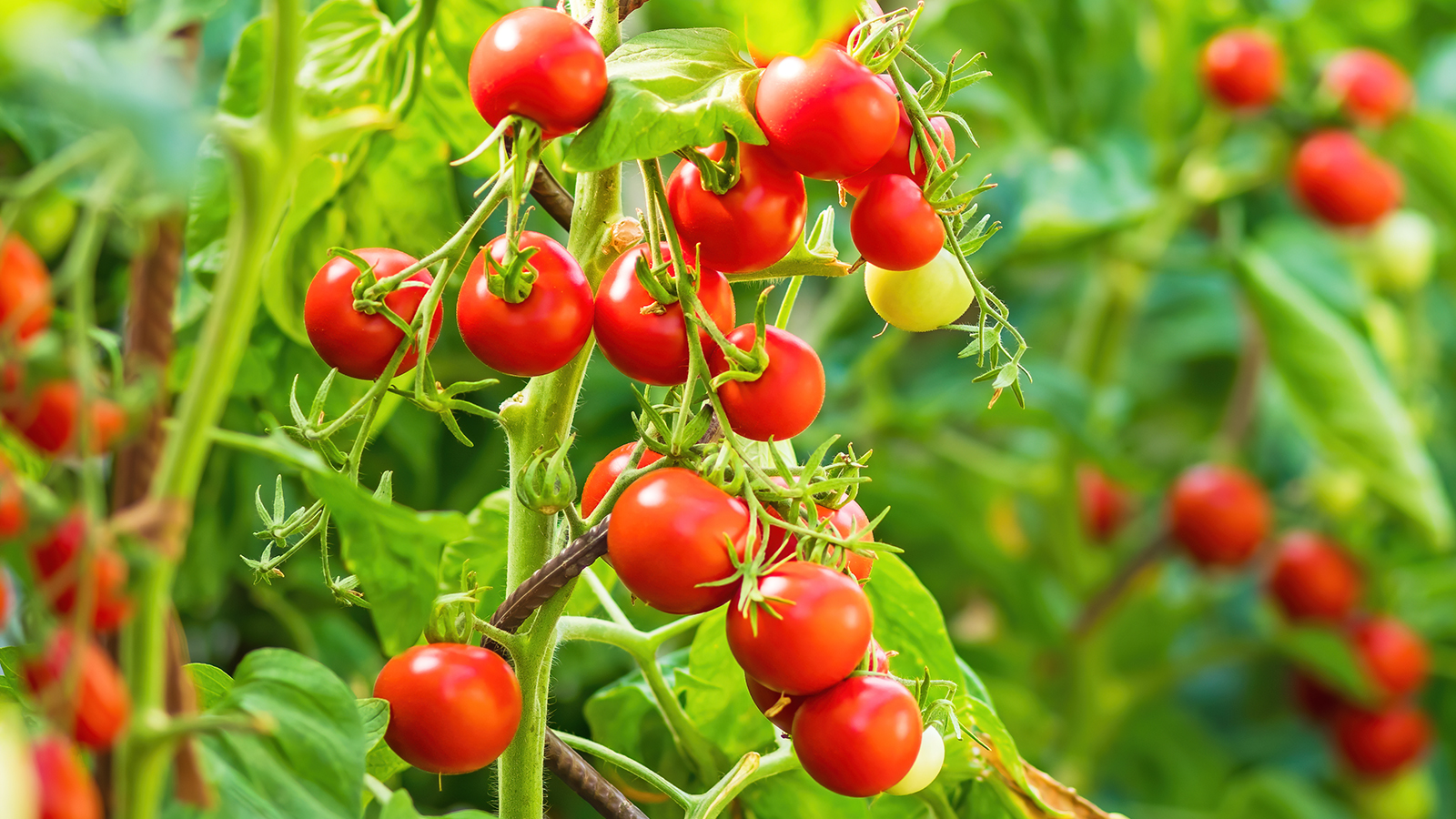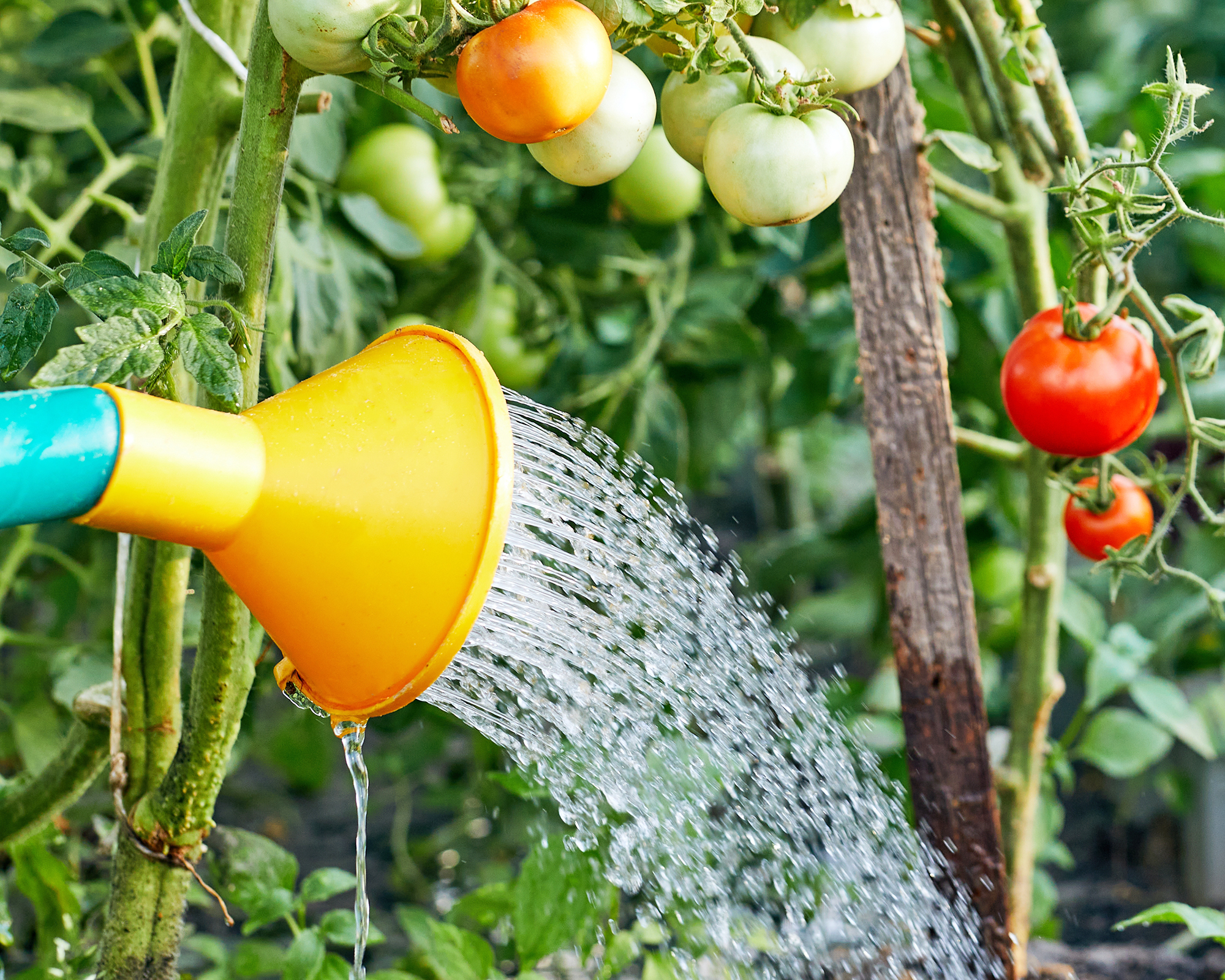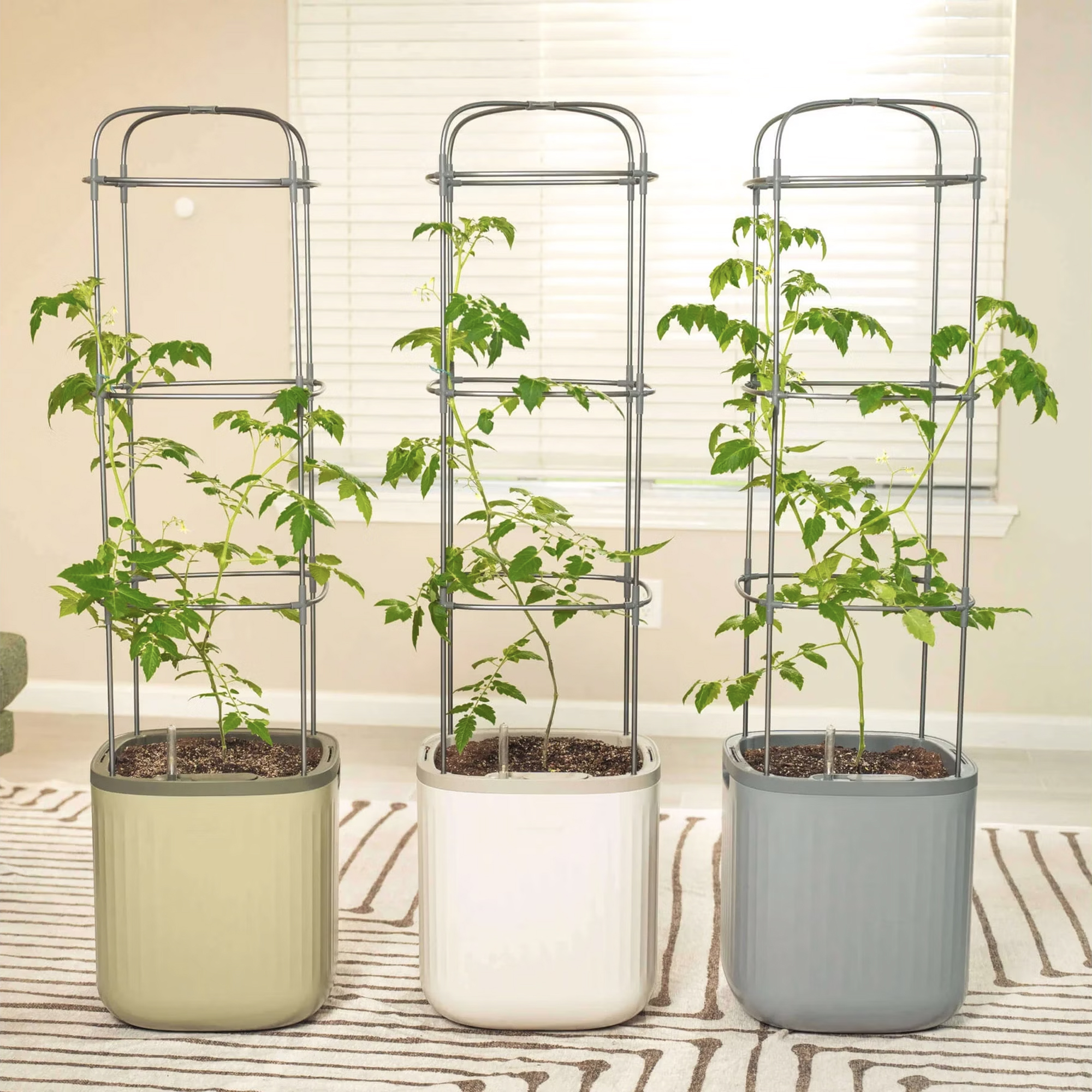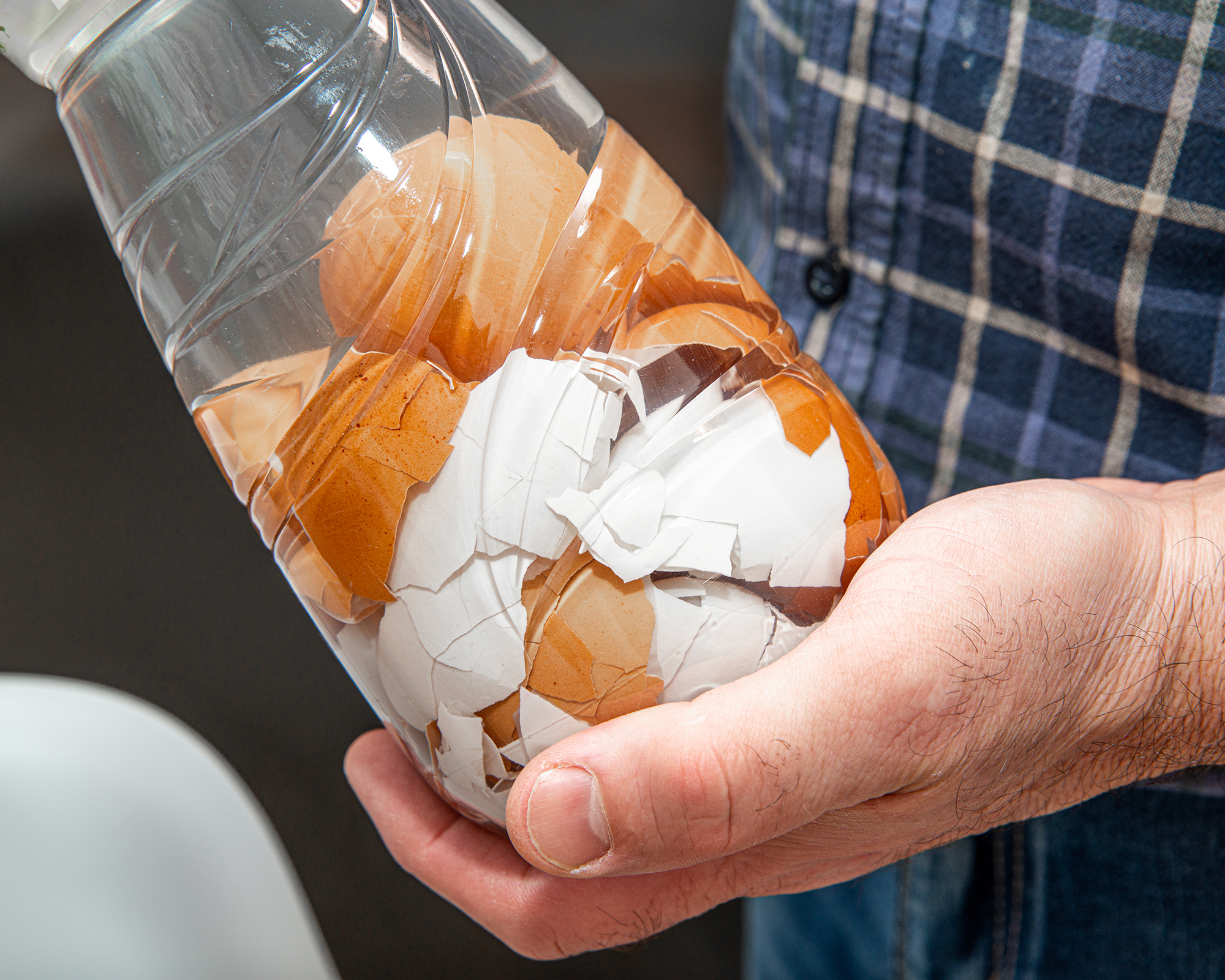Homemade Tomato Fertilizer: Powerful Natural Recipes For A Sublime Crop
Discover organic tomato fertilizing solutions that are quick, easy, and almost free to make – yet contain all the essential nutrients your plants need.


There is nothing like the taste of homegrown tomatoes – and with so many delicious uses they are the most versatile crop on the vegetable plot.
Learning how to grow tomatoes is trickier than some other vegetables, but the challenge makes it so much more satisfying come harvest time.
As the fruits are heavy feeders, fertilizing tomatoes is a vital part of the process. Commercial tomato feeds are widely available, but a homemade tomato fertilizer is natural, effective, and in most cases costs nothing.
Discover the essential ingredients to create powerful homemade tomato fertilizers – perfect for growing an organic vegetable garden.

Essential Tomato Plant Nutrients
First, consider the nutrient balance tomato plants need to thrive and produce a good, healthy crop.
All plants need nitrogen, phosphorus, and potassium (often abbreviated as npk). These nutrients are widely available in balanced fertilizers. However, tomatoes need a more tailored nutrient blend to maximize fruit production.
- Nitrogen is essential for green, leafy growth on plants. However, too much of it can result in all foliage and no fruit. Tomatoes benefit from slow-release nitrogen sources applied early in the planting process.
- Phosphorus fuels healthy root growth, as well as flower and fruit development. Too much phosphorus can result in stunted green growth, but this is rarely an issue when using natural fertilizers.
- Potassium contributes to tomato plants' general health and vitality, supporting photosynthesis and enabling fruit ripening. Too much potassium can increase the tomatoes’ acidity. Potassium is usually provided in the form of potash.
- Calcium is necessary for tomatoes to form a healthy cell structure and develop good fruit. A deficiency of calcium causes malformed fruit and blossom end rot.
- Magnesium is required for chlorophyll production, enabling tomato plants to photosynthesize. It is also necessary for the plants to absorb certain other nutrients. Where tomato plants lack magnesium, the leaves turn yellow, but the veining remains green.
- Iron is an essential nutrient for tomato plants, aiding the development of chlorophyll. Tomatoes don’t require much iron, but a deficiency causes iron chlorosis, turning the leaves yellow.
- Other essential nutrients include sulfur, copper, zinc, boron, and molybdenum, all of which can be supplemented with fertilizer.

Vego Garden’s tomato planter is the perfect way to allow tomatoes to thrive, delivering water to plants without having to worry about overflow. Fill it once to water your plant for several weeks. Regular price $129.95.

Homemade Tomato Fertilizer Recipes
The best source of DIY tomato fertilizer ingredients can be found in the kitchen. It is best to use a combination of these recipes, to get the maximum boost of nutrients for your plants.
Sign up for the Gardening Know How newsletter today and receive a free copy of our e-book "How to Grow Delicious Tomatoes".
Fertilize tomatoes at the time of planting and then every few weeks until harvest is over.
Several weeks before planting your tomato seedlings, amend the soil with well-rotted manure or organic compost. This will ensure that you have a good nutritional foundation to grow tomato plants, which can be supported by homemade fertilizers.
Use nitrogen-rich fertilizers early in the planting season, then switch focus to sources of potassium and phosphorus before flowering.
Banana Peels
Banana peels make the perfect natural tomato fertilizer as they are packed with nutrients, including potassium, magnesium, phosphorous, and calcium, but contain almost no nitrogen.
The best way to deliver it to tomato plants is to chop the banana peels into small pieces and dig into the soil around the plants.
Ideally, do this before planting your tomatoes to give the peels a chance to break down, then continue adding them throughout the growing season. Some gardeners simply add whole peels around the plants after eating bananas, though it’s best to cover them with soil.
Vegetable Peelings
Ideal for adding to the compost heap, vegetable peelings are packed with nitrogen, potassium, and phosphorus. However, they can also be buried in the planting hole prior to planting tomatoes. Ideally do this a couple of months before planting, to allow the peelings to break down.
For quicker results, you can make vegetable peelings "tea" to add as a liquid plant fertilizer. Simply add your peelings to a container, cover them with water, and allow to steep for a day or two. Strain and pour around plants.
Save up your peelings in the weeks prior to planting by freezing them.

Cooking Water
Instead of throwing away the cooking water from boiling vegetables, pasta, and rice, allow it to cool and use it to water your tomatoes.
This cooking water is infused with nutrients, including phosphorus, nitrogen, iron, and calcium.
However, it must be unsalted otherwise you could kill the plants.
Used Coffee Grounds
Used coffee grounds can provide slow-release nitrogen to tomato plants, fueling leaf development. They also supplement phosphorus, potassium, boron, calcium, copper, iron, magnesium, and zinc.
In addition, coffee grounds help to maintain the ideal pH level for tomatoes. However, as with all nitrogen-heavy fertilizers, they should be used in moderation on tomato plants.
To add coffee grounds to tomatoes, either mix in with the soil before planting, mulch around plants with a thin layer (½ inch), or make a coffee “tea” to use as liquid fertilizer. To make tea, soak two cups of used grounds in five gallons of water.

Onion Peels
Onion peels are packed with nutrients including potassium and calcium, making them a useful contributor to homemade tomato fertilizer. The dry outer skins of both red and white onions can be used.
There are two ways of utilizing onion peels – either grind them down and sprinkle in the soil, or soak them in water for a week, strain and use them as a powerful liquid fertilizer for tomatoes.
Eggshells
Eggshells are rich in calcium and also contain small amounts of potassium, phosphorus, and magnesium.
While egg shells can be added to the compost heap, they take a long time to break down. However, you can benefit from them more quickly by grinding them down to a powder for sprinkling into the planting hole or soaking them in water. Clean the eggshells first, and if grinding them, allow them to dry thoroughly.
To soak them in water, crush the eggshells down a little, add them to a container, and cover with boiling water. Leave to soak for a few days, strain, and then pour over the soil. Eggshell water can also be added to foliar sprays.

Epsom Salts
Epsom salts contain magnesium and sulfur, and are widely used as a natural plant fertilizer. For most plants, they are only beneficial where the plant is lacking in magnesium. However, tomatoes thrive when supplemented with magnesium in the form of Epsom salts.
Overuse of Epsom salts can cause more issues than it solves, so apply sparingly, and ideally test the soil before applying.
Rather than sprinkling the salt into the soil, you need to dilute it in water. Use about a tablespoon per gallon of water and apply at the time of planting, then no more than once a month.
Alternatively, using diluted Epsom salts as a foliar spray is also a great way to help the tomato plants to absorb it quickly.

Melanie is an experienced gardener and has worked in homes and gardens media for over 20 years. She previously served as Editor on Period Living magazine, and worked for Homes & Gardens, Gardening Etc, Real Homes, and Homebuilding & Renovating. Melanie has spent the last few years transforming her own garden, which is constantly evolving as a work in progress. She is also a passionate organic home grower, having experimented with almost every type of vegetable at some point. In her home, Melanie tends to an extensive houseplant collection and is particularly fond of orchids.